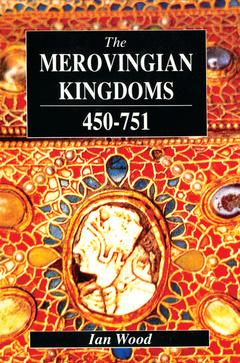The Merovingian Kingdoms 450 - 751
Auteur : Wood Ian

A comprehensive survey which begins with the rise of the Franks, then examines the Merovingians.
List of abbreviations. Preface. Introduction: Constructing Merovingian History. 1. The Barbarians in Gaul. 2. Literary continuity anddiscontinuity: Late-fifth-and-sixth-century culture. 3. The establishment of Merovingian power: the Franks before 537. 4. Kings and kingdoms: the structure of the realm in the 6th century. 5. The limites of ecclesiastical power: Episocopal jurisdiction and politics. 6. Stability in disunity: the civil wars of the 6th century. 7. Laws and law-codes: Merovingian legislation. 8. Royal women: Fredegund, ~Brunhilda and Radegund. 9. Redefining the Kingdom: Chlothar II, Dagobert I, Sigibert III and Clovis II. 10. The Merovingians and their neighbours. 11. The place of the monasteries: politics and the religious life, 613-64. 12. Land, wealth and the economy. 13. The failure of consensus: Merovingian politics from 656-80. 14. The culture of churchmen: education, theology and book-production in the later 7th century. 15. The check on ambition: Merovingian politics, 680-721. 16. Towards reunification: wars and politics, 721-751. 17. The Northern Emporia: Quentovic, Dorestad and the `Sceatta' economy. 18. Mission aaccomplished: the Merovingian church east of the Rhine. Conclusion: The Merovingian achievement.
considers their impact on their territories and much of western Europe fo nearly three centuries
emphasis on the central role of women - particularly Fredegund and Brunhild - challenging the conventional idea of medieval queenship
Date de parution : 02-2016
15.6x23.4 cm
Thème de The Merovingian Kingdoms 450 - 751 :
Mots-clés :
decem; libri; historiarr1111; liber; historiae; francorum; venantius; fortunatus; period; sidonius; Merovingian Kingdom; Frankish Kingdom; Liber Historiae Francorum; Chlothar II; Decem Libri Historiarum; Pippin II; Decem Libri; Annales Mettenses Priores; Vita Columbani; Gesta Abbatum Fontanellensium; St Wandrille; Clovis II; Vita Wilfridi; Mettenses Priores; Theudebert II; Pactus Legis Salicae; Merovingian Church; Childebert II; Venantius Fortunatus; Vita Eligii; Chilperic II; Medieval European Coinage; Theuderic II; Dagobert II; Vita Bonifatii



